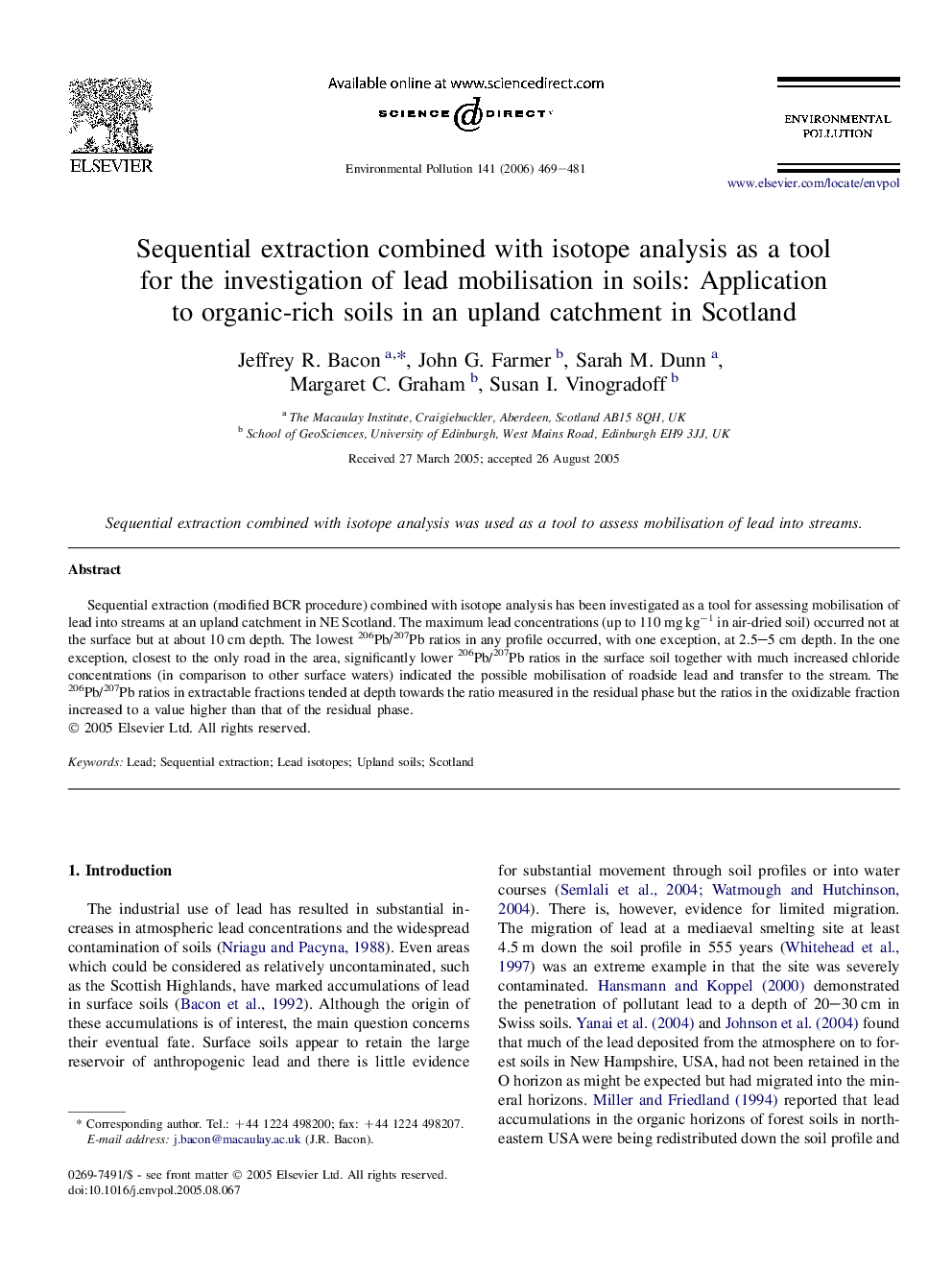| Article ID | Journal | Published Year | Pages | File Type |
|---|---|---|---|---|
| 4428057 | Environmental Pollution | 2006 | 13 Pages |
Sequential extraction (modified BCR procedure) combined with isotope analysis has been investigated as a tool for assessing mobilisation of lead into streams at an upland catchment in NE Scotland. The maximum lead concentrations (up to 110 mg kg−1 in air-dried soil) occurred not at the surface but at about 10 cm depth. The lowest 206Pb/207Pb ratios in any profile occurred, with one exception, at 2.5–5 cm depth. In the one exception, closest to the only road in the area, significantly lower 206Pb/207Pb ratios in the surface soil together with much increased chloride concentrations (in comparison to other surface waters) indicated the possible mobilisation of roadside lead and transfer to the stream. The 206Pb/207Pb ratios in extractable fractions tended at depth towards the ratio measured in the residual phase but the ratios in the oxidizable fraction increased to a value higher than that of the residual phase.
